Build Custom SLA Monitoring Software Using Joget
Date
Jul 02, 25
Reading Time
10 Minutes
Category
Low-Code/No-Code Development
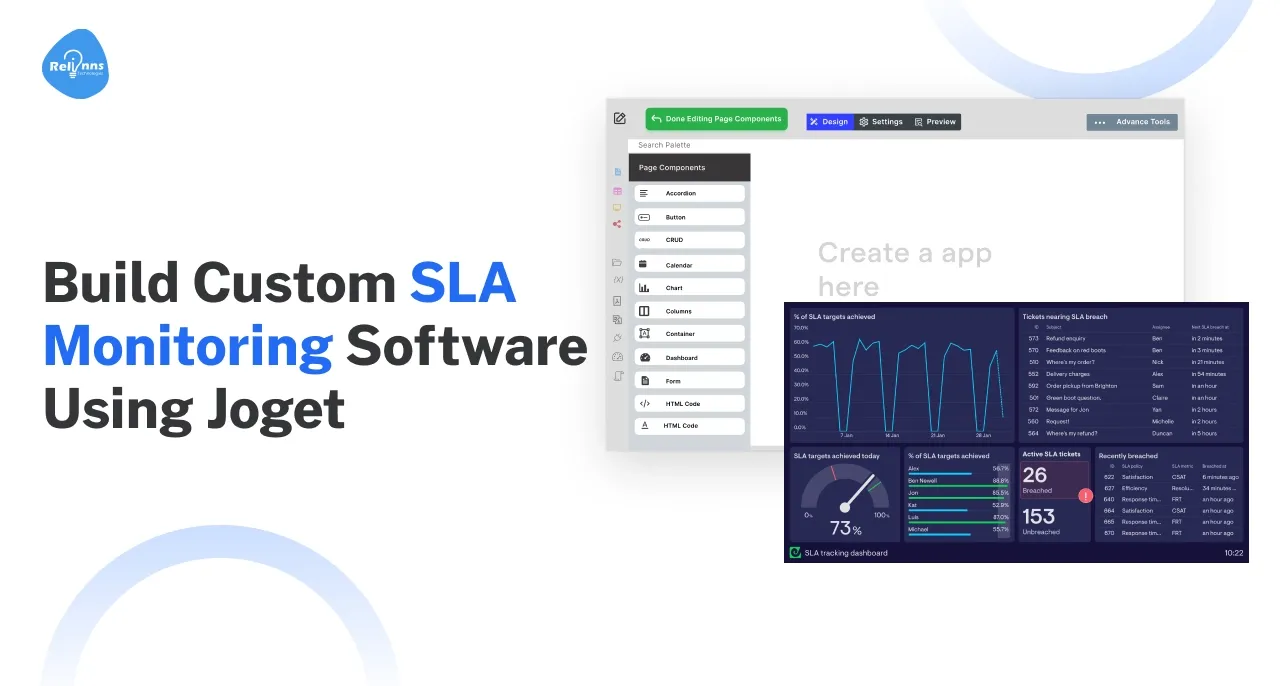
SLA breaches aren’t caused by slow teams; they happen because there’s no real-time visibility into critical deadlines. Many businesses mistakenly blame poor performance for delays, but the real problem is missing proactive monitoring that catches issues early.
The solution lies in intelligent SLA monitoring software. By automating deadline tracking, sending timely alerts, and escalating issues before they become critical, these tools give teams the power to stay ahead of potential breaches. Platforms like Joget make it easy to build scalable, enterprise-grade SLA apps with drag-and-drop simplicity no coding needed.
The benefits are clear: faster issue resolution, lower operational costs, and improved customer satisfaction. With Joget, you can create flexible, customized SLA monitoring systems that adapt to your business needs, boost accountability, and ensure smoother service delivery at scale.
What is SLA monitoring?
SLA monitoring is about keeping an eye on whether a service provider is living up to the promises made in the Service Level Agreement. It tracks key factors like uptime, response times, and overall reliability to make sure expectations are met.
Done well, SLA monitoring gives businesses clarity and confidence. It highlights issues before they grow, helps maintain smooth operations, and builds trust between companies and their providers by ensuring both sides stick to agreed standards.
What are the three types of SLA?
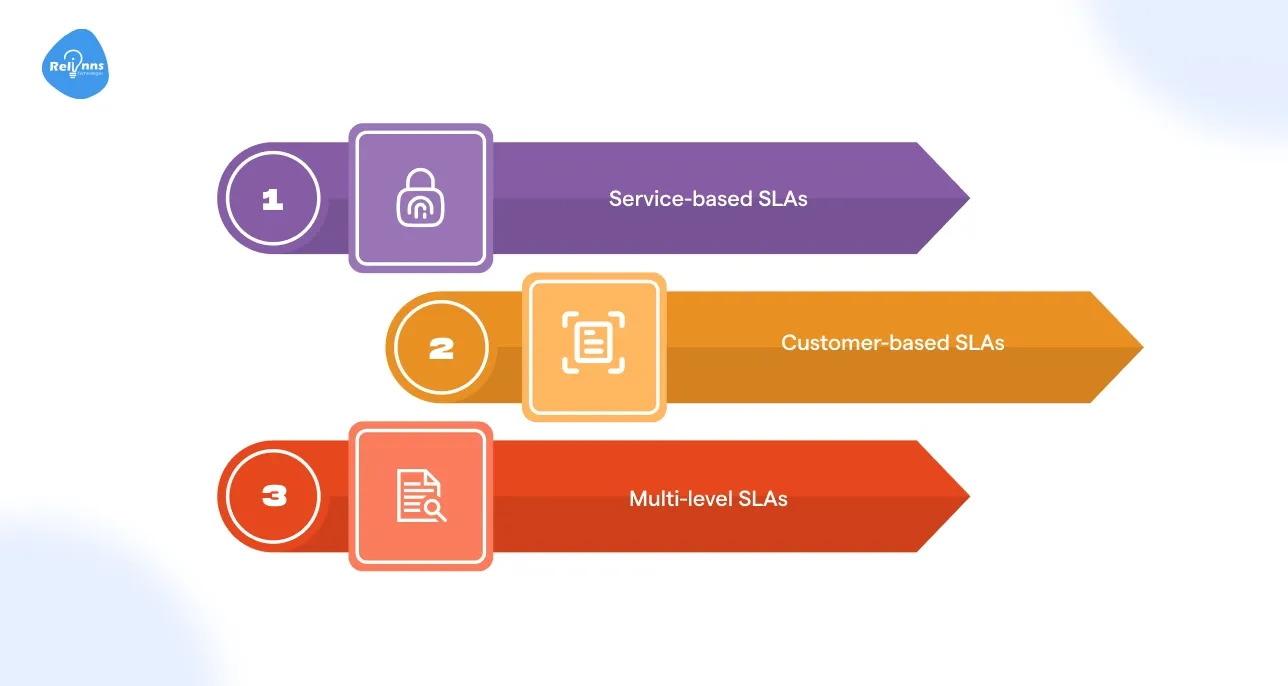
The three types of SLA are:
- Service-based SLAs (covering specific services)
- Customer-based SLAs (tailored to one client)
- Multi-level SLAs (combining corporate, customer, and service-specific agreements).
What is SLA software?
At its core, SLA software helps organizations keep track of critical deadlines and service commitments in real time. It goes beyond manual tracking by automatically monitoring progress, sending alerts before deadlines are missed, and escalating issues that need urgent attention.
With platforms like Joget, creating this kind of software is straightforward even for those without coding skills. Drag-and-drop tools let you build custom workflows, dynamic timers, and dashboards that fit your team’s unique needs, helping everyone stay accountable and proactive.
Ultimately, Joget SLA management from a challenge into a seamless, automated process keeping your business running smoothly and your customers happy.
What are the core features needed in SLA monitoring software?
You can’t manage service levels with reminders and spreadsheets. You need systems that act before things break.

A. Timers that do more than count
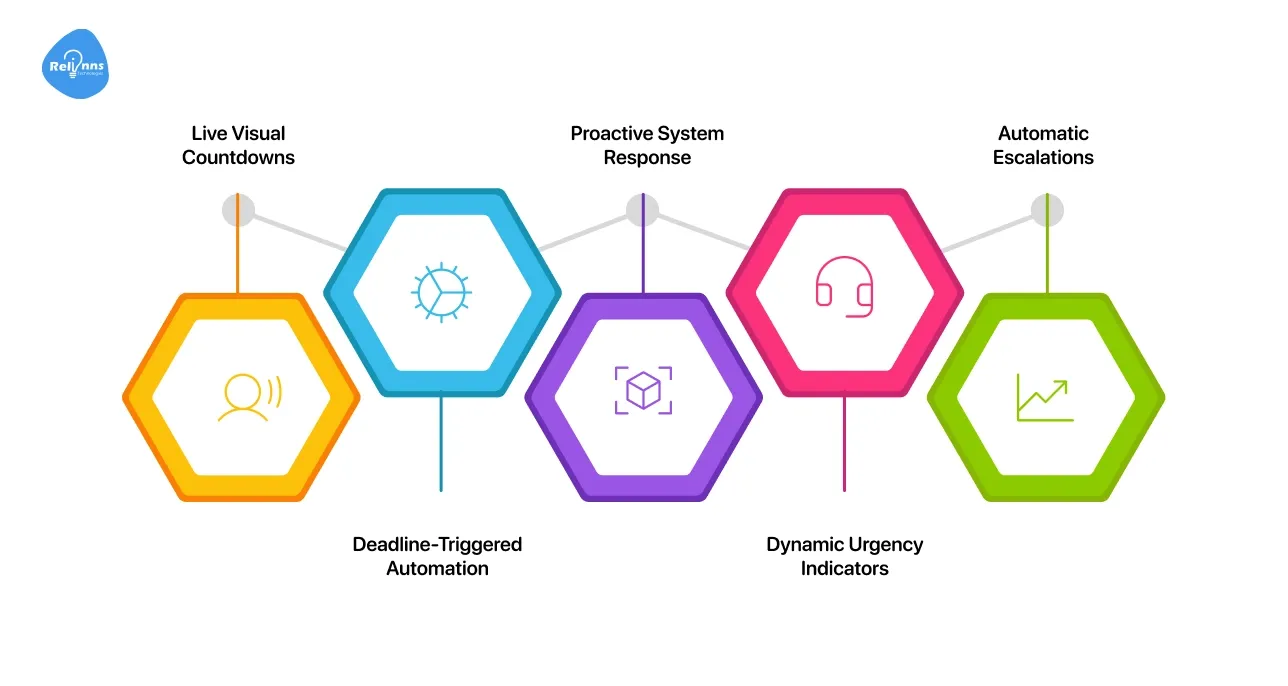
A deadline isn’t enough. You need to see how close you are to it live.
SLA monitoring software should display real-time timers that update as the task progresses. The closer the deadline, the more visible the urgency.
In Joget, these timers aren’t passive. You can set them to trigger changes, push updates, or escalate when time is running out.
Key Features
- Keep track of task progress instantly with live, always-updating visual countdowns.
- Turn approaching deadlines into triggers for smart workflow automation actions.
- Let the system respond before humans need to step in.
- Highlight urgency with dynamic visuals that shift as time shrinks.
- Configure escalations that activate automatically when critical time thresholds are crossed.
B. Built-in escalation that thinks ahead
Things fall through the cracks. That’s normal. What matters is how quickly they rise to the surface.
Escalation logic handles this. If a ticket isn’t closed in time, it moves to the top. If no one acts, it will continue to rise.
You can automate manual workflows by linking escalations to roles or departments. No emails. No manual oversight. The system handles it.
Key features
- Automatically escalate unresolved tasks to higher roles or decision-makers.
- Prioritize overdue items by raising their visibility in real-time views.
- Eliminate manual chasing with fully automated escalation workflow rules.
- Route critical issues directly to departments responsible for quick action.
- Ensure accountability by linking task urgency to organizational hierarchy rules.
C. Clear status and smart priorities
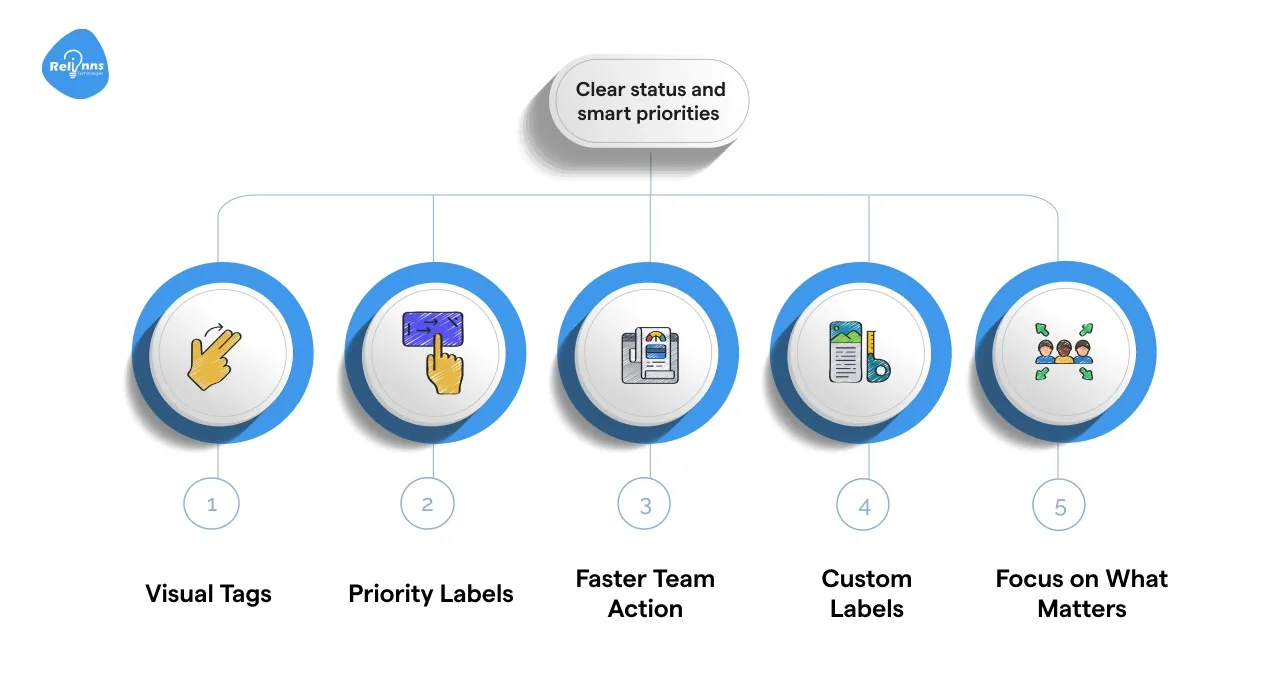
People work faster when they know what’s urgent.
With tags like “Open,” “At Risk,” or “Breached,” and labels like “High Priority,” everyone sees what needs attention first.
These small touches reduce confusion and wasted effort. And Joget lets you customize them however your team works best.
Key features
- Visual tags like “At Risk” instantly signal task time sensitivity.
- Priority labels show what needs attention before deadlines are missed.
- Teams act faster when urgency is visible and shared among team members.
- Custom labels align with workflows your team already understands well.
- Reduce wasted effort by showing exactly what matters right now.
D. Workflows that match reality
No two teams follow the same path.
That’s why workflows must be flexible. Development with Joget lets you build workflows that match how your actual team works, not just a template.
Whether it’s a 2-step check or a 5-step approval, you create what fits.
Key Features
- Design workflows that reflect your team’s real-world daily operations.
- Skip rigid templates build approval steps your process needs.
- Customize flows for simple tasks or complex multi-step decision chains.
- Adapt quickly as team structures, priorities, or processes evolve internally.
- Let your workflow mirror how your team naturally gets work done.
E. Alerts that help
Real-time alerts stop silent failures.
If a task has been sitting for too long or the deadline is approaching, the system can notify the right person. Not everyone. Just the one who needs to know.
Alerts can be emails, messages, or even in-app nudges.
Key Features
- Real-time alerts detect inactivity and warn before failures happen.
- Targeted notifications reach only the person responsible, not everyone else.
- Multi-channel alerts via email, chat, or in-app gentle nudges.
- Deadline warnings activate automatically as the due date approaches.
- Intelligent monitoring ensures nothing slips through unnoticed or unaddressed again.
F. Full history, without the extra work
When something goes wrong, people want answers.
Audit trails show who did what, and when. They help you identify gaps quickly and fix them without guesswork.
Joget does this automatically. No one has to remember to log things.
Key Features
- Audit trails track every action with accurate time and user stamps.
- Quickly identify process gaps without relying on memory or assumptions.
- Automatically log activities no manual tracking or updates needed.
- Strengthen accountability by clearly identifying who did what and when.
- Investigate issues faster with complete visibility into task-level history logs.
How to plan your SLA monitoring app in Joget?
Before you build anything in Joget, stop and sketch it out. You’ll catch things early like missing steps or clunky handoffs- before they become painful to fix later.

A. First, figure out your process
Try walking through the whole thing. Picture someone raising an issue say, a broken laptop.
Then ask: What happens next? Does it go straight to IT? Does someone triage it first? What if it doesn’t get fixed in time? Who steps in?
Lay it out on paper. Or use a whiteboard. Don’t overthink it just make the path clear. Even a quick table works.
B. Next, who’s involved?
Be specific.
If a support agent raises a ticket, who watches the clock? Who gets notified when something’s late? Who closes it out?
Guessing won’t cut it later when you’re assigning roles and permissions.
C. Define SLA levels early
Not every request is equal.
A server outage is not the same as a slow-loading page. Define your urgency tiers and give them time limits.
Two hours for critical stuff? 24 or 48 for low-priority ones. Your SLA Monitoring Software should handle these tiers without needing daily check-ins.
D. Sketch your forms and flow
Think about what people see and do. What form do they fill out? What happens when they hit submit? What should trigger a reminder? Or an escalation?
Anywhere people are doing the same thing over and over such as notifications, updates, and status changes flag it.
You can automate manual workflows, freeing up hours every week.
How to build the SLA software in Joget? (Step-by-Step)
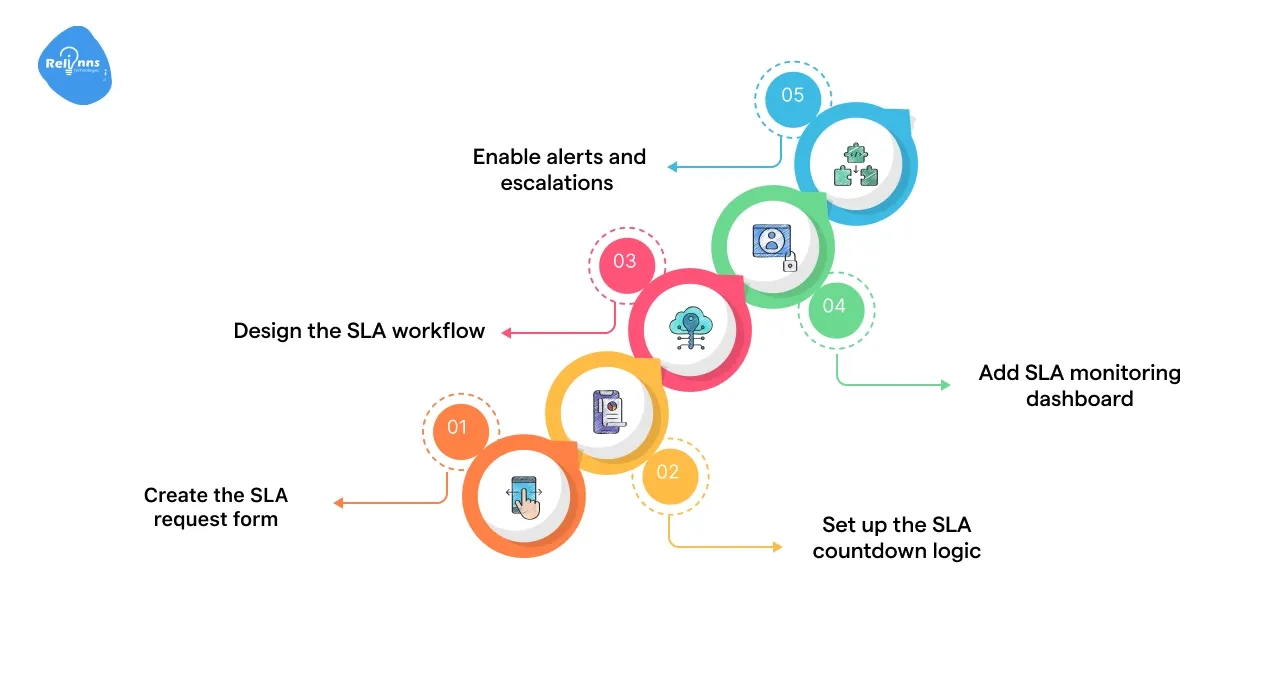
If you're building an SLA monitoring system in Joget, don’t wing it. Break it into focused pieces. Each part from the form to the alerts should do one job well.
Here’s how to build it from the ground up.
Step 1. Create the SLA request form
The form is your app’s front door. Open Joget’s Form Builder and keep it simple, but smart.
Include fields like
- Requester name
- Issue type (dropdown)
- Priority level (Low / Medium / High)
- Due time
Use dropdowns wherever you can. This helps avoid messy, inconsistent input. For “Priority,” tie it to backend logic, so “High” might mean 4 hours, and “Low” might mean 48. Use validation rules to ensure people don’t skip key fields.
Also, think about the user. If this form is intended for internal teams, label it in their language, rather than using IT jargon. Clarity saves you from support requests in the future.
Keep it clean. A form should never feel like a survey.
Step 2: Set up the SLA countdown logic
Now that tickets can be submitted, you need a way to track if they’re on time or already late.
In Joget, add a calculated field that compares “Now” with the “Due Time.”
- Time left in hours/minutes
- A breach status (like “On Track” or “Overdue”)
- Color indicators (green/yellow/red)
This isn’t just cosmetic. Visual feedback pushes users to act.
For greater flexibility, consider using plugins from the Joget Marketplace. Some offer working-day calculations, buffer periods, and SLA-specific time logic.
At this stage, you’re adding accountability without needing managers to manually check every ticket. This is where SLA Monitoring Software shines it quietly keeps everything moving.
Step 3. Design the SLA workflow
Open Joget’s Process Builder and drop your first step: Ticket Submitted.
From there, connect it to an auto-assignment step.
- If the issue type is 'Hardware', send it to IT support.
- If priority = High, skip the queue and notify the team lead.
Now, add a decision point: has the SLA been met? If yes, continue to closure. If no, route it to escalation.
- A status update
- A notification (email or in-app)
- A reason for delay (optional form field)
Use automated notifications to let teams know what’s overdue without pinging them every five minutes.
This is where you start to automate manual workflows that typically consume your afternoons.
Suggested Reading: 5 Signs Why You Need a Joget Development Consultant
Step 4. Add SLA monitoring dashboard
Once things are flowing, you need to see what’s happening.
Open Userview Builder and create a new menu for “SLA Monitoring.”
Add components
- Pie charts showing open vs. breached tickets
- Bar charts for breach count by issue type
- Tables showing overdue items, sorted by urgency
Let users filter by priority, assignee, or status. For example, a team lead could filter for “High Priority – Breached” in one click.
Also, personalize it. An agent should see their tickets. A manager should see team-level stats.
Dashboards aren’t just for pretty charts they’re where trends and red flags show up. The quicker you spot them, the better your SLA performance will be.
Step 5. Enable alerts and escalations
This part is all about timing.
In Joget, set up conditional email alerts that trigger when a breach occurs.
If status = Open AND due time < Now AND priority = High → Notify manager + escalate to next-level support.
You can also add these alerts directly to the process workflow. Utilize email tools or third-party plugins to tailor messaging and scheduling.
Don’t forget to limit noise. Not every delay needs a team-wide email. Target only what matters.
Also, consider Slack or Teams integrations if your org uses them. Receiving a live alert in chat is often faster than receiving an email, and it's easier to act on.
The result? Fewer delays, quicker recoveries, and a team that stays ahead of issues, not behind them.
Testing your SLA monitoring app
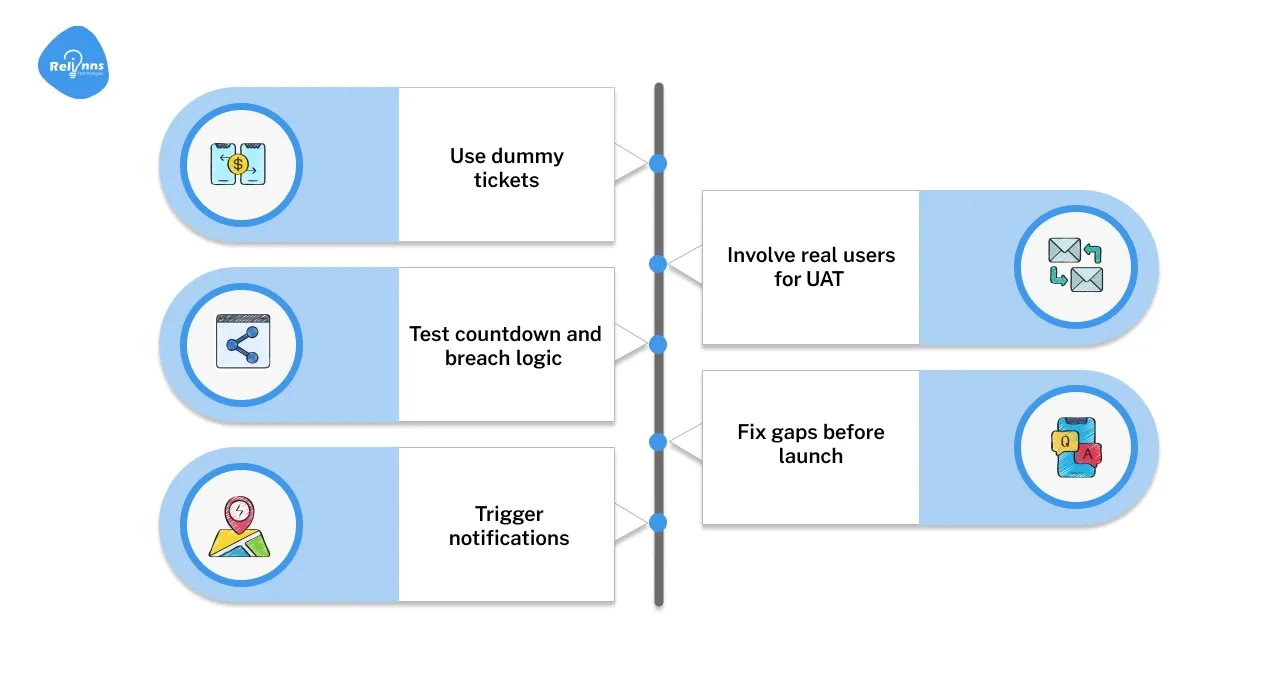
Testing is not just about functionality; it’s about confidence. Before launch, simulate real scenarios to ensure everything works as intended.
1. Use dummy tickets
Create test records with priorities (Low, Medium, High) and due times. Push each one through the workflow to validate the app's behavior under different SLA conditions.
2. Test countdown and breach logic
Check the SLA countdown timer. Is it showing the accurate time left? Do breached tickets display the correct alert status or message? Test both near-deadline and overdue scenarios.
3. Trigger notifications
Submit test tickets and observe how email or app notifications behave. Are alerts being sent only when they should? For high-priority breaches, ensure the escalation logic routes to the correct role.
4. Involve real users for UAT
Run a User Acceptance Test (UAT) with internal team members. Allow actual users to navigate the app and report any confusion, delays, or inconsistencies they encounter. Their feedback helps refine the UX and identify any missed logic.
5. Fix gaps before launch
Tweak field labels, fix routing bugs, and smooth out any workflow hiccups. Use insights from testing to build a launch-ready SLA Monitoring Software that won’t surprise your users later.
Publishing and user access for SLA monitoring app
Once your app passes testing, it’s time to move from staging to production. Joget’s deployment tools make this quick and painless.

1. Set up userview
Use the Userview Builder to customize your app layout. Organize pages such as “Submit Ticket,” “View SLA Status,” and “Dashboard” in a way that aligns with your team's daily workflow.
2. Set role-based permissions
Assign access based on user roles.
- Requesters can only submit and track tickets
- Agents can resolve and update statuses
- Managers can view dashboards and breach analytics
These rules help secure the app and tailor the experience to each user type.
3. One-click publish
Once everything’s in place, hit “Publish”. The SLA monitoring app goes live instantly no manual deployment or backend restarts are required.
Share the app URL with your team, embed it in your portal, or link it from internal tools.
Why SLA monitoring with Joget transforms service delivery?
Monitoring SLAs is about delivering services faster, more clearly, and in a more responsive manner.
With a smart SLA monitoring system, teams don’t wait for problems to surface; they anticipate them. Deadlines stop slipping, managers gain real-time visibility, and bottlenecks get resolved before they snowball.
That’s the kind of system Joget development makes possible and fast. Best of all, you've created this system without extensive coding or IT resources.
The drag-and-drop approach enables you to easily adapt your SLA monitoring software as processes evolve, automating manual workflows without needing to start from scratch each time.
At Relinns, we help businesses build custom SLA monitoring systems in days or weeks, not months.
These are the features we can incorporate into your custom SLA software:
- Real-time SLA status dashboards
- Customizable SLA threshold settings
- Color-coded compliance indicators
- Automated SLA escalation workflows
- Integration with ITSM ticket systems
- AI-powered SLA breach predictions
- Custom SLA reporting templates
- Mobile-friendly user interface
Using Joget’s Gen AI-enabled low-code/no-code platform, our team designs workflows, automations, and dashboards tailored to how your service operations actually run, without the typical dev delays.
Want to build a system that scales with your needs?
Let Relinns help you get there.
Frequently Asked Questions (FAQs)
What does SLA stand for?
SLA stands for Service Level Agreement.
Can I build SLA monitoring without any coding knowledge?
Yes, Joget's low-code platform is designed for business users. The drag-and-drop interface, pre-built components, and visual workflow designer eliminate the need for traditional coding.
You'll need to understand your SLA process well, but the technical implementation requires no programming background.
How does the SLA timer handle different time zones?
Joget supports time zone configuration at both the system and user levels. You can set up SLA calculations based on the service provider's time zone or the customer's time zone.
For global teams, you can incorporate time zone logic into your SLA calculations to ensure fair service delivery regardless of location.
Can I integrate the SLA monitoring app with our existing ticketing system?
Absolutely. Joget provides multiple integration options, including REST API, database connectors, and webhooks. You can set up bidirectional data flows that sync SLA information with external systems.
For example, you might pull ticket information from ServiceNow while sending SLA breach alerts back to it.
How do I handle SLAs with different business hours?
For organizations that don't operate 24/7, you can configure the SLA timer to account for business hours, weekends, and holidays.
Use Joget's calculated fields to implement working-hour calculations or leverage marketplace plugins designed specifically for business time tracking.
This ensures SLA timers pause outside of operational hours.
What's the best way to report on SLA performance trends?
Joget includes built-in reporting tools for tracking historical SLA performance. Create dedicated dashboard views that show monthly trends, breach rates by priority, and team performance.
For deeper analytics, you can connect your Joget app to BI tools through database access or API integration, enabling advanced performance tracking over time.


